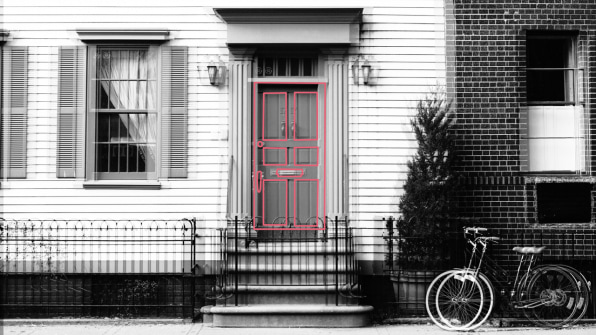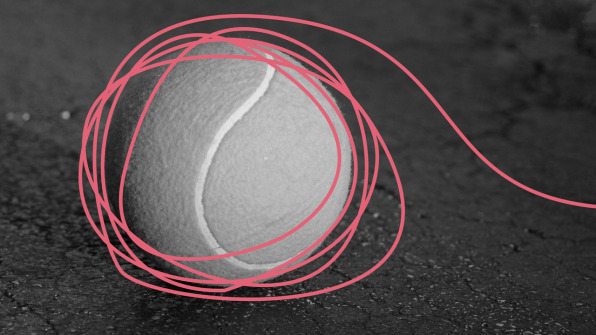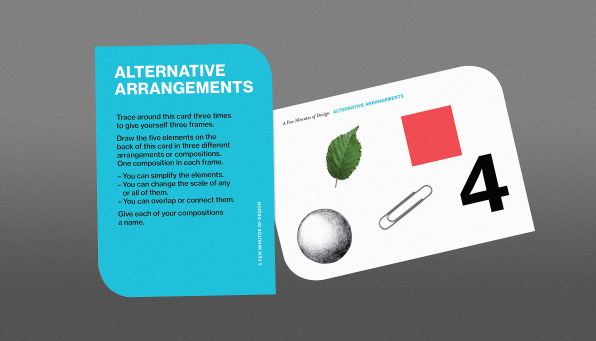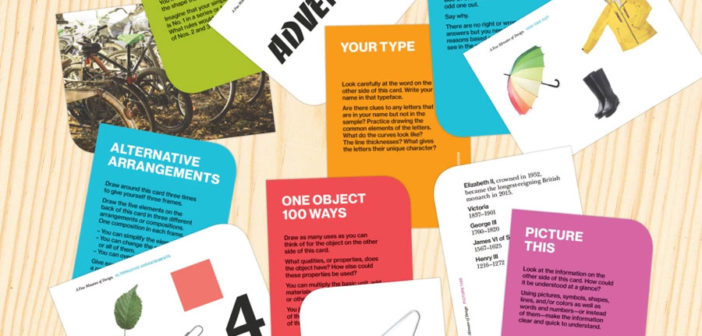Even simple drawing exercises can get your creative juices flowing.
What comes to mind when you hear the word “design”? A modernist chair or lamp? Minimalist Japanese fashion? An Apple device? Most often we think of manufactured or built objects–functional things we need and stylish things we want, small handheld or wearable items, structures we can sit at or sit on, and containers for our stuff. Large or small, we tend to think of designed things as the finished product. This can make it hard to imagine what it’s like to design them. But in pursuit of their vision of these finished products, designers are preoccupied by innumerable small decisions. How to join this part to that; how to establish a pattern or continue a series; how to say something without words; how best to terminate a shape or to group or classify elements and illuminate their significance; how to determine what fits or follows the rule, and what doesn’t. In my new activity guide A Few Minutes of Design, I attempt to evoke what it’s like to be a designer through a series of concise exercises. Although the lessons in these exercises may at first seem minor in comparison to the grand vision–the killer concept, the solved problem–small moves and decisions such as these can have a powerful influence on the success of a creative endeavor. Here are four to get you started.

SIMPLIFY THEN MULTIPLY
Counterintuitive though it may seem, rules are what make you creative. Find a shape within a complex photograph and trace or draw it. This will involve taking out the detail and tonal variety that photos capture. That’s the “simplify” bit. “Multiply” is where the rules come in: Imagine that your shape is No. 1 in a series. What rules govern the shapes of Nos. 2 and 3? Draw them.

RECALL
Sometimes the key to creativity is looking harder, or looking again. Recall the front door to your home, the last book you read, or a favorite item of clothing. Then draw it in from memory in as much detail as you can. To help you along, ask yourself questions like “How many parts or pieces of material is it made from?”, “Is there a publisher’s mark?”, and “Where are the seams?”

TRY A JOINT ENDEAVOR
Explain in a drawing how you would join two unrelated things neatly and securely. The pairs of things could include a wooden dowel and a tin can; a piece of knitting and a brick; and a tennis ball and a tile. It matters little why you would ever join such things. The point is that when we hear “God is in the details,” it’s usually at the junction of parts where true virtuosity lies.

DRAW ALTERNATIVE ARRANGEMENTS
Draw three frames. Then in each frame, draw the same five elements–a leaf, a paperclip, the number “4,” a red square, and a sphere–but in different arrangements. Give each arrangement a name. For example, “offside left,” or “cluster,” or “lined up horizontal.” This naming helps you to be deliberate about form in the way that artists and designers are.
–
This article first appeared in www.fastcompany.com
Seeking to build and grow your brand using the force of consumer insight, strategic foresight, creative disruption and technology prowess? Talk to us at +9714 3867728 or mail: info@groupisd.com or visit www.groupisd.com




